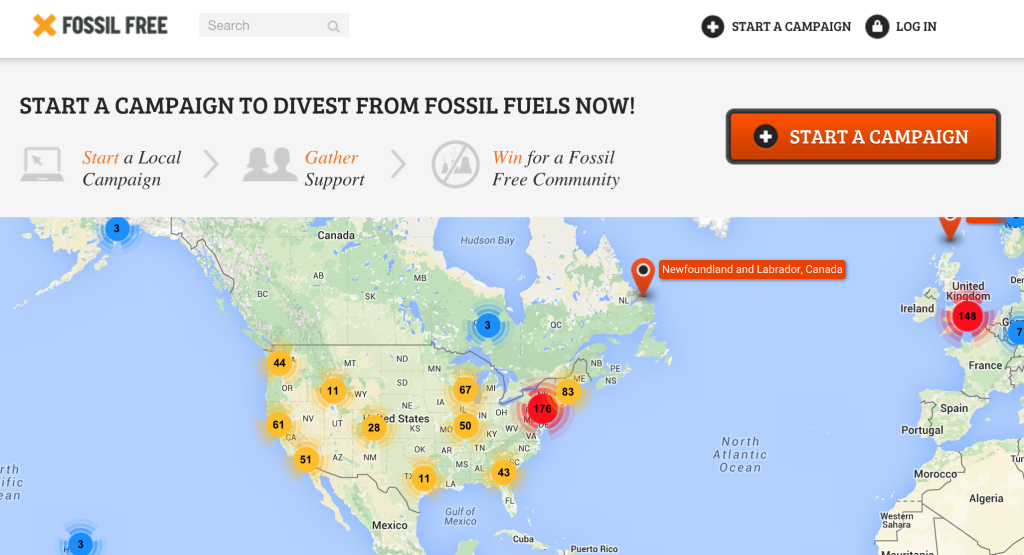Fossil Free USA
PHASE 2:
Plan Your Campaign Strategy
Here are some resources to help craft a winning campaign strategy.
Elements of a campaign
Campaigns are sustained efforts toward a specific outcome, like getting a university, church, or pension fund to divest from fossil fuels.
Often, groups spend a lot of time and energy on an endless series of events or actions that don’t result in any outcome. However, groups with clear goals and a strong strategy to achieve those goals are not only able to win, but build a movement!
Imagine your strategy is like a bridge that gets you from where you are to where you want to go, or your end goal. Your vision is the sun that guides you, or how you want the world or community to look. Along the bridge are steps, or your tactics, the actions you take to build your power and bring you closer to victory. It’s also helpful to have goals along the way, to show you how far you’ve come and how far you need to go.
Getting started
When you start planning, don’t spend too much time worrying about exactly how much money your institution has invested in fossil fuels. Having a basic understanding of the financial argument is a good way to get a foot in the door with administrators, but it takes more than presenting the right argument to win. You must demonstrate that your team represents a power too great to ignore, and convince the institution that it’s in their interest to divest.
Institutions will often refuse to share specific information about the endowment as a way to derail campaigns early on. But unless an institution has explicitly chosen to not invest in fossil fuels, then it’s pretty safe to assume they do hold fossil fuel investments.
Launching a petition is a great way to plant the divestment flag and get things moving.
Petitions are a useful way to demonstrate that there’s wide support for your campaign. The Fossil Free petition tool lets you set up your own petition, which will be added to the divestment campaign map for others to discover and add their support.
Crucially, the tool also lets you email and keep in touch with the people on the list to update them on campaign events, progress, and actions.
This is also a great time to do some research on other divestment campaigns and their strategy. Check out their websites, social channels, and look at newspaper articles. Fossil fuel divestment campaigns have been running for 3+ years with some amazing victories, so lean on each other! Join studentsdivest@googlegroups.com and the Facebook group to ask questions and communicate with campus divestment campaigners across the country.
For more, check out these awesome resources from Beautiful Trouble:
